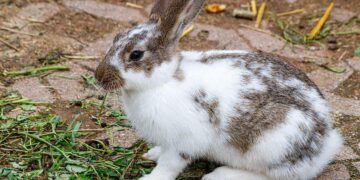Table of Contents
Part I: The Heartbreak of Silence: Deconstructing the Myth of “Bird Training”
Introduction: My Silent Companion, Pip
I remember the day I brought Pip home.
He was a whirlwind of gray and yellow, a tiny feathered dynamo with a crest that seemed to have a personality of its own.
I had read everything I could get my hands on.
I envisioned a deep bond, a clever companion who would greet me with a cheerful “Hello!” and fill my home with chatter.
I was ready to be the perfect bird owner.
I bought the best cage, the most nutritious food, and an arsenal of toys.
Most importantly, I was determined to teach him to talk.
My routine was a carbon copy of the “standard advice” you find everywhere.
Every morning and every evening, for precisely ten minutes, I would place Pip on his dedicated T-stand in a quiet room, free from distractions.1
I’d lean in, my face a mask of exaggerated enthusiasm, and repeat the same two phrases endlessly: “Hello, Pip!” and “Pretty bird!”.2
I was patient.
I was consistent.
I was, by all accounts, doing everything right.
But weeks turned into months, and the only sounds Pip made were the standard cockatiel chirps and the occasional irritated hiss.
There was no mimicry, no mumbling, not even a hint of an attempt.
The silence was more than just an absence of words; it felt like a chasm between us.
I’d see videos online of cockatiels whistling symphonies and chatting with their owners, and a knot of failure would tighten in my stomach.
Was I doing something wrong? Was Pip unhappy? Was our bond simply not strong enough? The joy of having him was slowly being overshadowed by a persistent, nagging sense of inadequacy.3
The breaking point came one afternoon when a friend was visiting.
“So, does he talk yet?” she asked, peering at Pip’s cage.
Brimming with a false confidence I didn’t feel, I coaxed Pip onto the T-stand and began my well-rehearsed routine.
“Hello, Pip! Pretty bird!” I chirped, my voice straining with forced cheerfulness.
Pip stared at me, his crest flat against his head.
Then, he turned his back, scurried to the farthest corner of his cage, and let out a low, definitive hiss.
The silence that followed was deafening, filled only by my own humiliation.
My friend offered a polite, “Well, he’s still very cute,” but I barely heard her.
In that moment, I knew something was fundamentally broken.
My method, the one sanctioned by countless articles and forums, was not just ineffective; it was pushing my bird away.4
It was then that I decided to abandon everything I thought I knew and find a different Way.
The Rote Repetition Trap: Why Common Advice Is a Dead End
That humiliating experience with Pip forced me to perform a forensic analysis of the conventional wisdom I had been following so blindly.
I realized that the standard approach to teaching a bird to talk is built on a foundation of flawed assumptions that ignore the very nature of the intelligent, social animal we are trying to connect with.
The first and most significant flaw is the reliance on decontextualized learning.
Imagine trying to teach a human child a language by sitting them in a quiet room and repeating the word “apple” for ten minutes straight, with no apple in sight.
The child might eventually mimic the sound, but would they understand what it means? Unlikely.
This is precisely what the rote repetition method does.
It divorces words from their meaning, treating them as abstract sounds to be memorized.5
Parrots, like children, are not tape recorders; they are learners who thrive on connecting sounds to the vibrant, tangible world around them.
Vocalizations, for them, are tools for interaction, not items on a checklist.6
Secondly, the very structure of these formal “training sessions” can be a source of profound stress.
While a quiet, distraction-free environment seems logical, the act of being removed from a comfortable space, placed on an exposed perch, and subjected to intense, repetitive vocalizations can be intimidating for a prey animal like a cockatiel.1
Instead of creating a receptive state for learning, this process can trigger a state of anxiety and avoidance.
The bird isn’t thinking, “Time to learn!”; it’s thinking, “What is this strange ritual, and why is this giant creature making loud noises at me?” This stress is a powerful inhibitor of learning and can actively damage the bond you’re trying to build.8
Finally, and perhaps most importantly, the standard method completely ignores the flock instinct.
Parrots are among the most social creatures on the planet.
Their complex vocal abilities evolved not as a party trick, but as a vital mechanism for social cohesion—for identifying flock members, warning of danger, and maintaining intricate social bonds.9
When a parrot in our home tries to mimic our speech, it is often a profound attempt to integrate into our human “flock”.11
The rote repetition method treats the bird as a solitary student to be programmed, rather than a social partner seeking connection.
It bypasses their deepest, most powerful motivation for vocalizing in the first place: the desire to belong.
Table 1: The Old Way vs. The New Way: A Paradigm Shift
My journey of deconstruction led me to realize that a fundamental shift in perspective was necessary.
We must move away from the mechanical model of training and embrace a relational model of language acquisition.
This table summarizes the core differences between these two opposing philosophies.
| Feature | Mechanical Training (The Old Way) | Relational Language Acquisition (The New Way) |
| Primary Goal | Elicit mimicry of words. | Foster two-way communication and deepen the bond. |
| Core Method | Rote repetition of isolated words. | Contextual conversation and social interaction. |
| Learning Environment | Designated, sterile “training” space. | The entire home as a language-rich “nursery.” |
| Role of Human | Trainer/Instructor. | Language Model/Flock Member/Caregiver. |
| Role of Bird | Student/Performer. | Language Learner/Social Partner. |
This paradigm shift is not just a change in tactics; it’s a change in how we view our birds.
It’s about respecting their intelligence, honoring their social nature, and creating an environment where language can blossom naturally, as a function of a loving and communicative relationship.
Part II: The Epiphany: My Bird Isn’t a Computer, He’s a Toddler
The Breakthrough Moment: From Bird Brain to Child Psychology
After the disastrous “show-off” session with Pip, I put my bird-training books away.
My frustration had turned into a quest for a deeper understanding.
Coincidentally, around the same time, I was diving into literature on early childhood development for personal reasons.
I was reading about how toddlers acquire language, and as I did, the pages seemed to light up.
I read that children learn language not from sterile drills, but from rich, interactive environments.12
They learn words for things that interest
them, not things an adult decides they should learn.13
They thrive on “parentese”—the melodic, high-pitched, emotionally expressive way caregivers naturally speak to them.14
They learn that “bye-bye” means someone is leaving because they hear it every time someone walks out the door.
The learning is social, contextual, and driven by a need to connect.
It was a staggering, paradigm-shifting epiphany.
I wasn’t just reading about human toddlers; I was reading a blueprint for everything I had been doing wrong with Pip.
I had been treating him like a computer to be programmed, when I should have been treating him like a toddler learning his first language.
The sterile training sessions, the decontextualized words, the lack of genuine interaction—it was the avian equivalent of putting a child in a sensory deprivation tank and expecting them to become a poet.
That was the moment the “Language Acquisition Method” was born.
I realized that to teach my cockatiel to talk, I had to stop being a “trainer” and start being a caregiver, a language model, and a flock member.
The Science of a Talking Bird: Why This Analogy Is More Than a Metaphor
This “toddler” analogy might sound like a simple, sentimental metaphor, but it is deeply rooted in the unique biology of the parrot brain.
The reason this approach works is that parrots and humans are members of a very exclusive club: we are both vocal production learners.
This rare ability to modify vocalizations based on auditory experience has led to remarkable convergent evolution in our brains and learning strategies.15
Groundbreaking research has revealed that the parrot brain is uniquely structured for this task.
Like other songbirds, parrots have defined brain centers for vocal learning, known as “cores.” But what sets parrots apart is the presence of an additional, more recently evolved structure: a “shell” that surrounds these cores.17
Scientists have found that these shell structures are also involved in vocal learning and are significantly larger in parrot species renowned for their ability to imitate human speech, such as the African Grey.
This “special edition” neural hardware is the biological engine that powers their incredible talent.
It suggests that the entire vocal pathway has been duplicated, providing a more complex and flexible system for processing and producing sounds.17
This advanced brainpower didn’t evolve for our amusement.
In the wild, vocal learning is a critical tool for navigating a complex social world.
Parrots live in dynamic flocks where they use distinct vocal dialects to distinguish friend from foe, maintain pair bonds, and communicate across distances.9
Their drive to mimic is fundamentally a drive to connect and belong.9
When your cockatiel tries to copy your words or the sound of the microwave, it’s not random mimicry; it’s an attempt to learn the “dialect” of your household flock and solidify its membership.10
Furthermore, the idea that we should be teaching for meaning is supported by compelling scientific evidence.
Studies on parrots, most famously Dr. Irene Pepperberg’s 30-year work with an African Grey named Alex, have demonstrated that these birds can do far more than just mimic.
Alex could identify objects, colors, and shapes, and use words like “same” and “different” to demonstrate conceptual understanding.6
Other studies have shown that parrots use their human vocabulary contextually—for example, saying “wanna talk” when seeking interaction or “where are you?” as a contact call when their owner is in another room.9
This proves that we are not just projecting meaning onto their sounds; they are capable of learning and using language in functionally appropriate ways.
This body of research validates the core premise of the toddler analogy: we are not dealing with a simple mimic, but with a sophisticated social learner capable of grasping context and meaning.
Part III: The Language Acquisition Method: A Four-Pillar Framework
Embracing the “toddler” paradigm means abandoning the idea of “training sessions” and adopting a holistic lifestyle of communication.
This method is built on four interconnected pillars that work together to create an environment where language can flourish.
This isn’t a checklist of tricks; it’s a complete system for fostering a communicative bond with your bird.
Pillar 1: Building the Nursery – The Power of a Language-Rich Environment
Before a single word can be learned, you must create the right foundation.
This pillar is about transforming your bird’s living space and your relationship from one of owner-and-pet to one of caregiver-and-learner.
From Cage to “Nursery”: The first step is to reposition the cage.
A bird hidden away in a quiet bedroom or office will not learn to talk.19
The cage must be in a central, active part of the home, like the living room or family room.
This placement transforms the cage from a mere enclosure into a “nursery” or a “crib.” From this vantage point, your cockatiel can observe the daily rhythms of the household, listen to the flow of conversation, and absorb the sounds and social dynamics of its human flock.
They are in the midst of the activity, which allows them to pick up on words and phrases that are used frequently and with emotional weight.19
Trust is the Foundation: Language acquisition is impossible without a foundation of trust and safety.
A fearful or stressed bird is a bird that cannot learn.
Before you even think about teaching words, you must focus on building a strong, positive bond.5
This means patience.
It means moving slowly and speaking softly around the cage.21
It means offering favorite treats, like millet spray, to associate your presence with positive experiences.
This bonding process can take days, weeks, or even months, but it is the non-negotiable first step.
Rushing this process is the single most common reason for failure.1
The “Only Child” Advantage: This is a critical and often difficult piece of advice for bird lovers: for the initial, most crucial phase of language acquisition, it is best to have a single bird.
Cockatiels are flock animals, and if they have a bird companion, they will naturally bond and communicate with their own kind in their own language.1
Their motivation to learn the strange, complex “language” of their human flock diminishes significantly.
A lone bird, on the other hand, will be more motivated to bond with you and adopt you as its flock, making it far more receptive to learning your vocalizations.1
Managing the Sensory World: A language-rich environment is not the same as a chaotic one.
While the bird should be in an active area, it’s crucial to manage the sensory input to prevent it from becoming overwhelming.
Sudden loud noises, frantic activity, or constant blaring from a television can cause stress, which hinders learning.8
The ideal “nursery” is a place filled with the gentle, predictable hum of daily life and the clear, consistent sound of your voice.
Pillar 2: The Music of Speech – Speaking “Parentese” to Your Bird
Once the nursery is established, the next pillar focuses not just on what you say, but how you say it.
This is where we borrow a powerful insight from the seemingly unrelated field of music theory.
Your voice is an instrument, and learning to play it correctly is key to capturing your cockatiel’s attention.
Parrots are incredibly attuned to the musical qualities of sound.
Scientific studies and anecdotal evidence consistently show their sensitivity to pitch (how high or low a sound is), rhythm (the pattern of sounds), tempo (the speed), and dynamics (the volume and emotional intensity).23
These are the fundamental building blocks of music, and they are also the building blocks of engaging speech.25
This brings us to the technique of “Parentese,” the specific way caregivers across cultures instinctively talk to infants.
This isn’t “baby talk” with nonsensical words; it’s a modification of adult speech characterized by a higher pitch, a more melodic and exaggerated intonation, and a slower, more rhythmic cadence.14
Scientists believe this speaking style is uniquely effective at capturing a developing brain’s attention and highlighting the important components of language.
For our purposes, speaking “Parentese” to your cockatiel is the most effective way to make your speech stand out from the ambient noise and signal that you are communicating directly with them.
Here is how to apply these musical principles in practice:
- Pitch: Use a higher, more cheerful pitch. Birds are naturally more responsive to higher-frequency sounds, which is why they often learn more easily from women and children.1 A deep, monotone voice can be perceived as threatening or may simply be ignored.
- Rhythm and Tempo: Speak with a clear, deliberate rhythm. Enunciate each syllable carefully and speak slightly slower than you normally would.19 This breaks the words down into digestible acoustic components, making it easier for the bird to process and eventually replicate.
- Dynamics and Expression: This is perhaps the most crucial element. Speak with enthusiasm and emotion! Words that are said loudly, emphatically, and expressively are learned with astonishing speed.5 This is the scientific reason why so many parrots learn to say “Ouch!” or swear words first—these words are almost always uttered with a burst of emotional energy. When you are teaching a word, infuse it with positive, excited energy. Your bird will be drawn to the emotional content of the sound, making the word itself far more memorable.
Pillar 3: Learning in Context – Connecting Words to the World
This pillar is the heart of the Language Acquisition Method.
It’s where we make language functional and meaningful by weaving it into the fabric of daily life.
Words are not abstract sounds to be drilled; they are labels for the real things, actions, and events that make up your bird’s world.5
The single most powerful technique is to become a narrator for your bird.
This means talking your way through your day, constantly and consistently connecting your words to your actions.
This isn’t a “session”—it’s a continuous stream of language input that provides a rich, contextualized curriculum.
Here are some powerful ways to implement this:
- Routine-Based Language: Anchor key phrases to daily routines. Every single time you uncover the cage in the morning, say a cheerful, “Good morning, Pip!” Every time you cover it at night, say a calm, “Night night, Pip”.5 Consistency is paramount. Over time, the bird will form a powerful association between the sound and the event.
- Labeling Food and Treats: Food is a primary motivator for all animals.5 Use this to your advantage. As you offer a favorite seed, say, “Want a seed?” or “Yummy seed!” When you change the food bowl, say, “Here’s your food!” Name the fruits and vegetables as you offer them: “Apple for Pip!” or “Carrot time!”.5
- Narrating Actions and Activities: Talk about what you’re doing, especially when it involves the bird. “Let’s change your water,” “Time to clean the cage,” or “Pip is playing with his bell!”.27 This constant narration provides a rich tapestry of associations. When you leave the room, say “Bye-bye!” or “Be right back!” When you return, say “I’m home!”
- Follow Their Lead (The Principle of Relevance): This is a crucial concept borrowed directly from child psychology.12 Pay close attention to what your bird is interested in at any given moment. Their focus is a signal of what they are motivated to learn about. If you see Pip looking intently at his reflection, that is the perfect moment to say, “Who’s that pretty bird?” If he is rattling a specific toy, approach and say, “That’s your noisy toy!” By labeling the things that already have his attention, you are harnessing his natural curiosity as a powerful learning engine.
This pillar requires a shift in your own mindset.
You must get used to talking to your bird constantly, even if it feels silly at first.
You are not just talking at him; you are immersing him in a functional language environment, providing thousands of data points that his intelligent brain can process and learn from.
Pillar 4: The Conversational Turn – Fostering a Two-Way Street
The final pillar completes the communicative loop.
It’s not enough to just talk to your bird; you must learn to listen back and respond to their attempts to communicate with you.
This is what transforms a one-way lecture into a two-way conversation and provides the positive reinforcement that fuels further learning.
Decoding “Birdlese”: The first attempts at speech will almost never be clear words.
They will be what I call “birdlese”—quiet, garbled mumbling that may sound like nonsense to the untrained ear.19
It is absolutely critical to learn to recognize this stage.
This is your bird “practicing” under his breath.
He is trying to work out the complex motor skills needed to replicate the sounds you’ve been making.
Listen closely, especially when he is quiet and relaxed.
You might hear soft, muffled approximations of the phrases you’ve been repeating.
This is the first sign of success, and it must be encouraged.
Alongside vocalizations, learn to read his body language.
A raised crest indicates excitement or interest, while eye pinning (the rapid dilation and contraction of the pupils) can also signal heightened attention.20
These are non-verbal cues that he is engaged in the “conversation.”
Reinforce, Respond, and Expand: This three-step process is another direct import from child language development and is the key to shaping those mumbles into clear words.
- Reinforce: The moment you hear your bird attempt a word, or even a piece of a word, you must reinforce it immediately. Offer enthusiastic praise in a high, happy voice (“Good boy! You said it!”), and give him a favorite treat.5 This creates a powerful positive association and tells him, “Yes, that sound you just made is important and valuable!”
- Respond: Treat his vocalization as a genuine communicative turn. If he mumbles something that sounds like “p’etty,” respond as if he said “pretty” clearly. “Yes, you are a pretty bird! Such a pretty boy!”
- Expand: This is the most sophisticated step. After responding, expand on his utterance, modeling the full, correct phrase. If he says something that sounds like “wa-er” when looking at his water dish, you would respond enthusiastically, “Water! Yes, that’s your water! Do you want some fresh water?”.12 This does two things: it confirms that you understood his attempt, and it provides a clear, contextual model of the correct pronunciation and grammatical use.
This conversational turn-taking is the engine of language acquisition.
It provides the motivation, the feedback, and the refined data your bird needs to progress from simple mimicry to meaningful communication.
It’s the difference between a bird that can say a word and a bird that can have a conversation.
Part IV: From Mumbles to Meaning: A Practical Roadmap and Troubleshooting
Adopting the Language Acquisition Method is a journey, not a race.
Progress will be gradual, and it’s essential to have realistic expectations and to celebrate the small victories along the Way. This section provides a developmental roadmap based on my experience with Pip and a guide to navigating the common challenges you might encounter.
A Developmental Guide to Your Cockatiel’s Speech
This journey unfolds in stages.
Recognizing these stages will help you stay patient and focused on the right actions at the right time.
- Stage 1: The Silent Observer (Weeks 1-4): When you first bring your young cockatiel home, your sole focus should be on Pillar 1: Building the Nursery. The bird will be quiet, watchful, and acclimating to its new environment. Your job is to build trust. Sit near the cage and talk to him calmly and gently. Move slowly. Offer treats. Let him get used to the sounds and rhythms of your home. Do not expect any vocal attempts during this critical period. With Pip, this stage was all about letting him see that I was a safe, predictable presence.
- Stage 2: The Babbler (Months 1-3): Once the bird feels safe and bonded, you will enter the babbling stage. This is where you’ll first hear the quiet, private mumbling or “birdlese”.19 It might sound like soft static or garbled whispers. This is your bird beginning to practice. Your focus now shifts to
Pillar 2 (Musical Speech) and Pillar 3 (Contextual Learning). This is the period of intense language input. Narrate everything. Speak with musicality and enthusiasm. You are loading his brain with the raw data he needs. I remember hearing Pip’s first mumbles and feeling a surge of excitement; it was the first sign that the method was working. - Stage 3: The First “Words” (Months 3-6+): After a period of babbling, you may hear the first recognizable word approximations. They will likely be unclear and slurred. For Pip, it was a breathy “P’etty.” This is a monumental milestone. Your focus must now be on Pillar 4: The Conversational Turn. The moment you hear an attempt, reinforce it with praise and a treat. Respond to it and expand upon it. “Yes, Pip! You’re a pretty bird!” This feedback is what will shape those slurred sounds into clearer words.
- Stage 4: Contextual Chatter (Year 1+): This is the ultimate goal. With continued reinforcement and contextual learning, your bird may begin to use his words in the correct situations.19 Pip’s first contextual word was “Night night,” which he started saying on his own when I reached for his cage cover. The day he greeted me with a clear “Hi, Pip!” as I walked into the room was the culmination of our entire journey. It wasn’t just a mimicked sound; it was a greeting, a true act of communication born from our shared history and bond.
Table 2: Vocal Development Milestones in Cockatiels
To help you track your own bird’s journey, here is a simplified table of developmental milestones.
Timelines are approximate and will vary greatly between individual birds.
| Stage | Approximate Timeline | Bird’s Behavior | Owner’s Focus |
| 1. Pre-Vocal/Observational | First 2-4 weeks | Quiet, watchful, may hiss if scared. Acclimating to new environment. | Pillar 1: Build trust, create a safe “nursery,” speak calmly. |
| 2. Babbling/Mumbling | 1-3 months | Quiet, soft, garbled mumbling sounds, often when relaxed or alone. | Pillars 2 & 3: Intensive language input. Narrate daily life with musical, enthusiastic speech. |
| 3. First Approximations | 3-6+ months | First recognizable but unclear words or parts of words. | Pillar 4: Listen carefully. Immediately reinforce, respond to, and expand upon any attempts. |
| 4. Clearer Words | 6-12+ months | Words become more distinct and easier to understand. Vocabulary may expand. | All Pillars: Continue consistent contextual narration and conversational turn-taking. |
| 5. Contextual Use | 1 year+ | Begins using specific words/phrases in appropriate contexts (e.g., greetings). | All Pillars: Deepen the conversational bond. Introduce new concepts and phrases. |
When the Silence Persists: A Compassionate Guide to Troubleshooting
It is a crucial truth that not all cockatiels will learn to talk, no matter how perfectly you apply this method.
If you are struggling, it’s important to approach the situation with compassion and curiosity, not frustration.
First, recognize factors that are outside your control:
- Gender: Male cockatiels are the primary vocalists in the species. They are genetically programmed to sing and vocalize to attract mates. While some females may learn a word or two, they are generally much quieter. It is far more likely that a male will become a prolific talker.1
- Individual Personality: Just like humans, birds have unique personalities. Some are naturally bold and chatty, while others are shy and reserved. You may simply have a quiet bird.3
- Health and Past Trauma: A sudden decrease in vocalization or a persistent silence can be a sign of illness or pain. If you have any concerns, a check-up with an avian veterinarian is essential.3 Birds that have been neglected or rehomed may also carry trauma that makes them less likely to vocalize.
- Age: While older birds can certainly learn, the prime window for language acquisition is when they are young, ideally under six months old. An older bird will require significantly more time and patience.1
The Whistling Dilemma: A very common scenario is that a cockatiel learns to whistle a tune and then abandons speech training entirely.
This is because whistling is physically easier and more natural for them than forming human words.1
To avoid this, it is highly recommended that you focus exclusively on teaching words
first.
Once your bird has a solid verbal vocabulary, you can then introduce whistling as a fun addition.
If you start with whistling, you may find it difficult to ever transition to speech.1
Table 3: Troubleshooting Common Talking Problems
This table provides a quick reference for some of the most common challenges and how to address them using the principles of our method.
| Observed Issue | Potential Cause(s) | Empathetic Solution(s) |
| My bird is silent and fearful. | Lack of trust; new environment; past trauma. | Focus exclusively on Pillar 1. Spend weeks or months just building trust. Sit by the cage, talk softly, offer high-value treats. Do not pressure the bird. Patience is your only tool. |
| My bird only whistles. | Whistling was introduced too early; it’s easier than talking. | Stop whistling to the bird for a period. Focus entirely on verbal communication using Pillars 2, 3, and 4. Make talking the most rewarding and engaging interaction. |
| My bird only mumbles. | The bird is in the “babbling” stage (Stage 2); lacks confidence or clarity. | This is progress! Focus on Pillar 4. Listen for these mumbles and reinforce them enthusiastically. Respond and expand on them to model the clear version. |
| My bird learned one word and stopped. | The owner stopped providing rich, varied input after the first success. | Celebrate the win, but don’t stop! Re-engage with Pillar 3. Continue narrating your life and introduce new, simple, contextual phrases to expand their potential vocabulary. |
| My bird learned a “bad” word! | The word was said with high emotional energy (dynamics), making it memorable. | Do not react! Any reaction—laughing or scolding—is a powerful reinforcement. Completely ignore the word. Simultaneously, choose a new, desirable word and say it with even more positive enthusiasm to try and overwrite the old one. |
Part V: Conclusion: The True Reward is Connection
My journey with Pip began with a simple goal: I wanted to teach my bird to talk.
It ended with a much more profound realization.
The words, when they finally came, were not the true prize.
The real reward was the journey itself—the process of dismantling my own flawed assumptions, of learning to see the world through the eyes of another intelligent being, and of building a bond based on mutual understanding and respect.
The Language Acquisition Method is, at its core, a framework for connection.
It asks us to be more present, more observant, and more empathetic.
It transforms mundane daily routines into opportunities for interaction and shared experience.
The principles of creating a safe nursery, speaking with musicality, narrating our lives, and listening with intent are not just techniques for teaching speech; they are techniques for building a deep and meaningful relationship.11
Today, Pip is a chatterbox.
He greets me, he names his favorite treats, and he whistles little tunes.
But the moments I cherish most are not just the ones where he speaks.
I cherish the quiet moments when he preens contentedly on my shoulder, the way he looks at me when I talk to him, and the simple, trusting presence he brings to my life.
The talking is a beautiful, miraculous outcome of the bond we built.
I encourage you to embark on this journey not with the sole expectation of a talking bird, but with the goal of a deeper connection.
Whether your cockatiel learns a vocabulary of 200 words or never utters a single human phrase, applying these principles will invariably enrich your relationship.
It will teach you to listen more closely, to communicate more clearly, and to appreciate the complex, intelligent, and wonderful companion you share your life with.
The goal is connection.
The communication will follow.
Works cited
- How to teach your bird to talk – some tips for you – Lets Talk Birds, accessed on August 10, 2025, https://www.letstalkbirds.com/teaching-pet-birds-to-talk/
- How can you teach your cockatiel to talk? – Quora, accessed on August 10, 2025, https://www.quora.com/How-can-you-teach-your-cockatiel-to-talk
- My cockatiel is not very talkative? : r/cockatiel – Reddit, accessed on August 10, 2025, https://www.reddit.com/r/cockatiel/comments/1h5zgpr/my_cockatiel_is_not_very_talkative/
- Cockatiels still don’t like us. | The Parrot Club, accessed on August 10, 2025, https://theparrotclub.co.uk/community/index.php?threads/cockatiels-still-don%E2%80%99t-like-us.38892/
- Teaching a Bird to Talk – Better Pets and Gardens, accessed on August 10, 2025, https://www.betterpetsandgardens.com.au/pet-care/birds-and-poultry/teaching-a-bird-to-talk/
- Parrot Communication and Intelligence | Nature: Parrot Confidential | PBS LearningMedia, accessed on August 10, 2025, https://www.pbslearningmedia.org/resource/nat14.sci.lifsci.parcom/parrot-communications-and-intelligence/
- 8 Training Mistakes Every Beginner Makes with Cockatiel – YouTube, accessed on August 10, 2025, https://www.youtube.com/watch?v=0x7Zgd0-15E
- Is Your Cockatiel Unhappy? Signs of Stress & Seasonal Blues (COMPILATION) – YouTube, accessed on August 10, 2025, https://www.youtube.com/watch?v=13NeJqt2O28
- Social context influences the vocalizations of a home-raised African …, accessed on August 10, 2025, https://pubmed.ncbi.nlm.nih.gov/21381810/
- Talking bird – Wikipedia, accessed on August 10, 2025, https://en.wikipedia.org/wiki/Talking_bird
- Social Interaction – Avian Enrichment, accessed on August 10, 2025, https://avianenrichment.com/index.php/learn-mobile/the-emotional-needs-of-parrots/social-interaction
- Six principles of language development and how to support them in early childhood settings, accessed on August 10, 2025, https://my.chartered.college/early-childhood-hub/six-principles-of-language-development-and-how-to-support-them-in-early-childhood-settings/
- Language development: children 0-8 years | Raising Children Network, accessed on August 10, 2025, https://raisingchildren.net.au/babies/development/language-development/language-development-0-8
- EARLY LANGUAGE DEVELOPMENT, accessed on August 10, 2025, https://learninghub.earlychildhoodaustralia.org.au/wp-content/uploads/2023/02/ISP-Resource-Early-Language-Development-FA-web.pdf
- An ecological and neurobiological perspective on the evolution of vocal learning – Frontiers, accessed on August 10, 2025, https://www.frontiersin.org/journals/ecology-and-evolution/articles/10.3389/fevo.2023.1193903/full
- Second Language Acquisition: Possible Insights from Studies on How Birds Acquire Song, accessed on August 10, 2025, https://www.cambridge.org/core/journals/studies-in-second-language-acquisition/article/second-language-acquisition-possible-insights-from-studies-on-how-birds-acquire-song/A90674C59E87A3190B0FA3E0B13C5D9C
- Study Hints at Why Parrots are Great Vocal Imitators | Duke Today, accessed on August 10, 2025, https://today.duke.edu/2015/06/parrotshells
- How To Teach a Parrot to Talk in Just 2 Steps, accessed on August 10, 2025, https://parrotessentials.co.uk/blog/how-to-teach-a-parrot-to-talk
- training birds to talk – AFA Watchbird, accessed on August 10, 2025, https://watchbird-ojs-tamu.tdl.org/watchbird/article/view/2044
- How to Train a Cockatiel to Talk: 9 Steps (with Pictures) – wikiHow, accessed on August 10, 2025, https://www.wikihow.com/Train-a-Cockatiel-to-Talk
- How to Tame a Cockatiel (with Pictures) – wikiHow, accessed on August 10, 2025, https://www.wikihow.com/Tame-a-Cockatiel
- How to hand tame cockatiels – some tips for you – Lets Talk Birds, accessed on August 10, 2025, https://www.letstalkbirds.com/taming-training-pet-cockatiels/
- Cockatiels’ Singing Skills Confirmed As They Mimic Human Whistles In Perfect Harmony, accessed on August 10, 2025, https://www.iflscience.com/cockatiels-singing-skills-confirmed-as-they-mimic-human-whistles-in-perfect-harmony-61061
- Do Parrots Like Music? Vet-Reviewed Science | Hepper Pet Resources, accessed on August 10, 2025, https://articles.hepper.com/do-parrots-like-music/
- Learning Music Theory: Why It’s Important for Students | Music & Arts, accessed on August 10, 2025, https://thevault.musicarts.com/importance-of-learning-music-theory/
- Basic Music Theory for Beginners – The Complete Guide – Icon Collective, accessed on August 10, 2025, https://www.iconcollective.edu/basic-music-theory
- Speech Delay success stories : r/toddlers – Reddit, accessed on August 10, 2025, https://www.reddit.com/r/toddlers/comments/e9x5gc/speech_delay_success_stories/
- Can a Cockatiel Talk? What You Need to Know | Hepper Pet Resources, accessed on August 10, 2025, https://articles.hepper.com/can-a-cockatiel-talk/
- Do your parrots speak in context? – Reddit, accessed on August 10, 2025, https://www.reddit.com/r/parrots/comments/363yvg/do_your_parrots_speak_in_context/
- What are the Most Vocal Types of Pet Birds? | myBird, accessed on August 10, 2025, https://myrightbird.com/articles/what-are-the-most-vocal-types-of-pet-birds
- How Cockatiels Choose Their Favorite Human – YouTube, accessed on August 10, 2025, https://www.youtube.com/watch?v=0j-se-zdlb0






